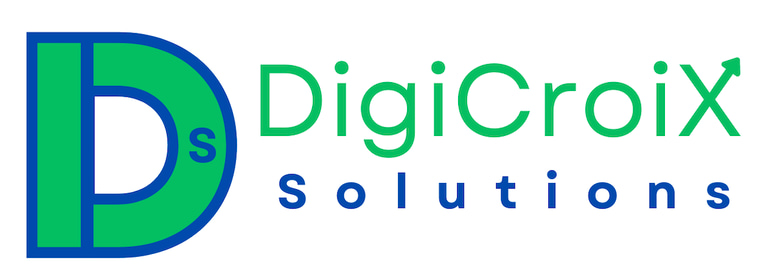Social Media and Healthcare Marketing: Leveraging Patient Stories
Boost engagement by weaving real social media and healthcare marketing stories from patients. Learn how to collect, curate, and publish ethically. Book a 1‑hour call to start your storytelling program.
Vishwa Raval
10/11/20254 min read


The Power of Patient Stories in Healthcare Marketing
Patient stories serve as a vital component in the landscape of healthcare marketing, providing a unique lens through which potential patients can visualize their own experiences within the healthcare system. These authentic narratives bridge the gap between healthcare providers and patients, fostering emotional connections that significantly impact trust and credibility. When individuals share their personal healthcare journeys, they not only humanize the clinical environment but also empower others by offering relatable experiences.
The integration of patient stories into marketing strategies can take various forms. Written testimonials capture the essence of individual experiences, allowing others to glean insights from the trials and triumphs shared by patients. These narratives serve not just as endorsements of a healthcare provider, but as relatable accounts that can reduce feelings of isolation and uncertainty for potential patients. Additionally, video stories provide a dynamic format that can evoke empathy through visual and auditory elements, giving voice to patients’ struggles and victories. Social media posts are also an effective channel for disseminating these patient stories, leveraging platforms that many individuals regularly engage with to reach a broader audience.
The impact of sharing authentic patient experiences cannot be overstated. When potential patients engage with these stories, they often feel a sense of familiarity and trust toward healthcare providers, encouraging them to seek care. Furthermore, showcasing user-generated content can facilitate a community atmosphere, as patients feel valued and recognized, and healthcare providers demonstrate their commitment to patient-centered care. In the ever-evolving terrain of healthcare marketing, utilizing patient stories not only enhances brand visibility but also positions providers as trustworthy partners in health and wellness.
Collecting Patient Stories Ethically
The utilization of patient stories in healthcare marketing and social media requires a deep understanding of the ethical considerations involved. Central to this process is the principle of informed consent, which mandates that healthcare providers obtain explicit permission from patients before sharing their narratives. It is vital to ensure that patients are fully aware of how their stories will be used, whether for promotional materials, social media posts, or other marketing strategies. This transparency fosters trust between healthcare organizations and their patients, encouraging willingness to share experiences.
Privacy is another paramount concern when collecting patient stories. Healthcare professionals should adhere to legal frameworks such as the Health Insurance Portability and Accountability Act (HIPAA) to protect sensitive medical information. This includes redacting personal identifiable information unless specific consent has been granted to include such details. Additionally, organizations should implement robust data protection measures to safeguard any collected stories against unauthorized access or breaches.
Authenticity is also crucial in storytelling. It is important to present patient stories in a manner that is true to the individuals' experiences, avoiding exaggeration or misrepresentation. Healthcare marketers should strive for genuine representation, ensuring that the essence of the patient’s journey is conveyed with accuracy and respect. This approach not only strengthens the integrity of marketing efforts but also enhances audience engagement through relatable narratives.
To facilitate ethical storytelling practices, healthcare institutions should invest in training for their staff. Employees should be educated on the importance of respecting patient dignity and privacy during the story collection process. Establishing comprehensive guidelines for interactions with patients can further promote a culture of respect and ethics in healthcare marketing. These measures will lead to a more meaningful and responsible way of leveraging patient stories, benefiting both the organization and the wider community.
Curating and Presenting Patient Narratives
In the realm of healthcare marketing, the curation of patient stories plays a pivotal role in building trust and engagement within the community. Selecting compelling narratives requires a critical understanding of the healthcare provider's brand values and marketing objectives. To ensure alignment, it is essential to evaluate stories that reflect the mission and vision of the organization while authentically representing the patients' experiences.
Diversity in patient experiences enhances the relatability of the narratives showcased. It is crucial to include a range of voices, backgrounds, and conditions to resonate with a broader audience. By presenting a variety of patient journeys, healthcare providers can emphasize their commitment to inclusivity and understanding. This not only helps potential patients feel seen and heard but also establishes the provider as a compassionate entity in the healthcare landscape.
Maintaining a consistent voice and tone across various social media platforms is paramount. Each story should be crafted with clarity and empathy, ensuring that the emotional weight of the experiences is felt by the audience. By using similar phrasing and language, healthcare marketers can create a cohesive brand presence, which fosters familiarity and trust over time.
Furthermore, optimizing content for social media engagement involves incorporating visual elements such as graphics, images, and videos. These components capture the audience's attention and can effectively complement the narratives being told. Calls to action are equally important; they encourage viewers to engage more deeply with the content, whether it be sharing their own stories, reaching out for services, or simply learning more. In curating patient narratives, the goal should be to not only inform but also inspire both existing and prospective patients to engage with the healthcare brand actively.
Implementing a Storytelling Program
Implementing a storytelling program within healthcare organizations requires a systematic approach to ensure its success and effectiveness. The first step is to establish clear objectives that define what the organization hopes to achieve through storytelling. Objectives could range from enhancing patient engagement to increasing awareness of specific health services. Setting measurable goals will help in assessing the impact of the program over time.
After defining objectives, the next step involves identifying the target audience. Understanding the demographics, preferences, and needs of the audience will guide the type of stories to be shared. For instance, patient stories that resonate with a younger demographic might emphasize innovative treatments, while narratives for an older audience might focus on care quality and personal connections. This targeted approach fosters a deeper connection with the audience, enhancing the effectiveness of storytelling initiatives.
Once objectives and audience segments are determined, creating a content calendar becomes essential. A content calendar aids in organizing storytelling efforts, allowing for consistent and timely posts across various platforms. It ensures a variety of content types—such as videos, written testimonials, and infographics—reach audiences regularly. By planning content ahead of time, healthcare organizations can streamline their messaging and adapt to seasonal or current health trends.
Post-launch, leveraging social media analytics is crucial to gauge engagement levels and the overall effectiveness of the storytelling program. Organizations should assess metrics such as likes, shares, comments, and overall reach to inform future storytelling strategies. This feedback loop allows for the continuous refinement of stories shared.
In addition to these steps, fostering an ongoing dialogue with the audience is vital. Organizations should continuously collect and update patient stories, ensuring the content remains relevant and relatable. As a final suggestion, booking a consultation call can help tailor a customized storytelling program that aligns with the organization’s unique goals and audience needs.
Get in Touch
Book your free consultation today and let's create a strategy to elevate your success!


Address
94 Shree Nagar Apartment, Sola Road, Naranpura, Ahmedabad, Gujarat, India 380063
6706 Fulton Avenue, Burnaby, BC, Canada V5E 3H1
Phone
+91 88497 12474
Quick Links
© 2025. All rights reserved.
Useful Links
Engagement
Subscribe
+91 88497 12474
